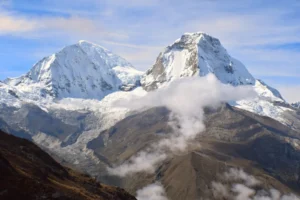
Despite heavy snowfall in 2024, new report warns of accelerating glacier melt and rising sea-level threats due to global warming and snow deficits
Switzerland glaciers are once again bracing for a tough summer as a new report reveals that winter snow cover was 13% lower than the 2010–2020 average a worrying sign of their deepening vulnerability to climate change. The finding comes from Glacier Monitoring Switzerland (Glamos), whose latest assessment shows that the glaciers continue to suffer rapid losses even in years with significant snowfall.
According to Glamos data Swiss glaciers lost 10% of their total ice volume in just two years 2022 and 2023 marking the steepest decline since records began. The current snow deficit though less severe than the two previous dry winters still points to another difficult year for glaciers warned.
Why Snow Cover Matters
Snowfall during winter plays a crucial role in glacier survival. It acts as a protective shield, insulating the ice beneath from the sun’s heat when temperatures rise. But with less snow on the surface, glaciers become more exposed and vulnerable to faster melting during the summer months.
Research team measured snow depths ranging between 1 to 4 meters across 21 glaciers and extrapolated the results to estimate conditions across all 1,400 glaciers in Switzerland. Their findings confirm a “winter snow deficit” of 13% a clear sign that glaciers are not replenishing at the rate needed to offset summer melt.
Regional Variation and Dust Complications
The impact of the snow shortfall isn’t uniform. Northeastern Switzerland recorded particularly low snow levels, while southern and southwestern regions fared better, thanks to heavy mid-April snowfall. However, even these areas are not in the clear, as a warm summer could still accelerate ice loss.
Adding to the problem is the deposition of dust from the Sahara Desert, a phenomenon that worsened glacier melt last year. This dust darkens the glacier’s surface, reducing its albedo the ability to reflect sunlight. Darker surfaces absorb more heat, leading to faster melting even if snow levels appear sufficient at the start of the season.
Warning for the Future
Last year Swiss glaciers lost 2.4% of their volume despite decent winter snowfall, largely due to a hot summer and the added effect of dust. This trend of glaciers retreating faster than ever signals an ongoing crisis with global implications, including sea-level rise and disruption to freshwater supplies.
The report stands as yet another stark warning from scientists that unless global greenhouse gas emissions are drastically reduced, glaciers across the Alps and the world are on a path to extinction.
